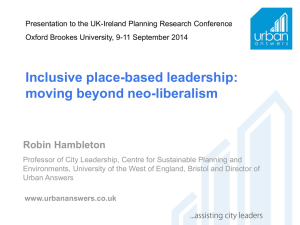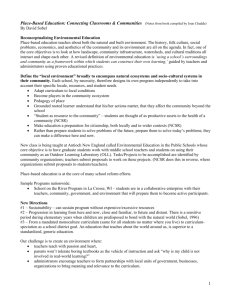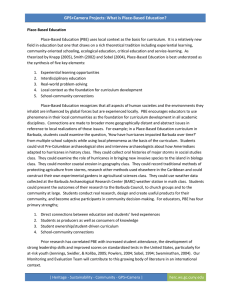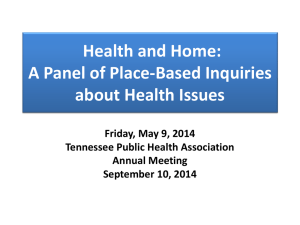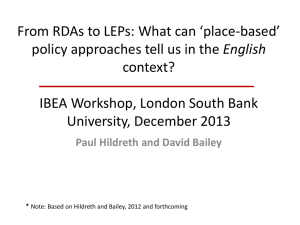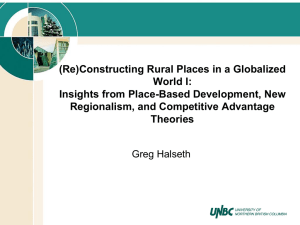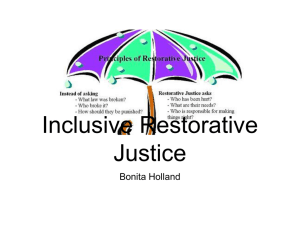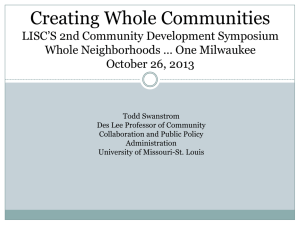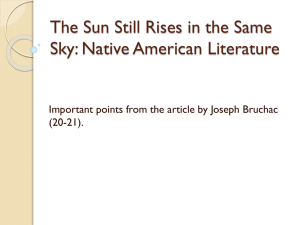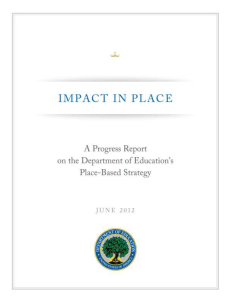Microsoft PowerPoint - University of the West of England
advertisement
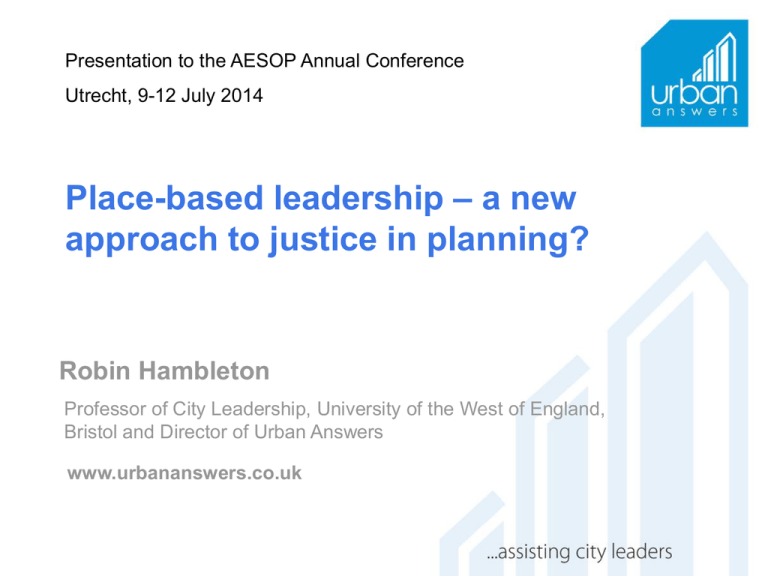
Presentation to the AESOP Annual Conference Utrecht, 9-12 July 2014 Place-based leadership – a new approach to justice in planning? Robin Hambleton Professor of City Leadership, University of the West of England, Bristol and Director of Urban Answers www.urbananswers.co.uk Place-based leadership – a new approach to justice in planning? A presentation in five parts: • Prelude: Leading the Inclusive City • Place-less power and place-based power • Framing the power of place • The New Civic Leadership • Reflections on the New Civic Leadership Part 1: Prelude: Leading the inclusive city Leading the inclusive city A new book to be published by Policy Press (University of Bristol) in November 2014 Tackling injustice – the central challenge for public leadership Leading the Inclusive City is a values-driven book The definition of the inclusive city used in the book is as follows: ‘The inclusive city is governed by powerful, place-based democratic institutions. All residents are able to participate fully in the society and the economy, and civic leaders strive for just results while caring for the natural environment on which we all depend’ Utopian, yes. But it is ‘realistic utopianism’ to use Susan Fainstein’s phrase (The Just City Fainstein 2010 p 20) Innovation Stories in Leading the Inclusive City There are seventeen Innovation Stories in Leading the Inclusive City: 1) New York City 2) Bristol 3) Chicago 4) Swindon 5) Enschede 6) Langrug 7) Auckland 8) Malmo 9) Curitiba 10) Guangzhou 11) Freiburg 12) Copenhagen 13) Melbourne 14) Hamamatsu 15) Toronto 16) Portland 17) Ahmedabad Part 2: Place-less power and place based power Place-less power in a global era Globalisation has resulted in a spectacular growth in place-less power in the last thirty years… Place-less decision makers disregard the consequences of their decisions for particular places. This has devastating consequences for people living in particular places A story about chocolate bars… if there is time Place-based decision makers have a commitment to improving the quality of life of communities living in ‘their’ place This highlights a distinction between different kinds of private sector organisations: the predators and the producers Where are the feelings? Urban and regional development has neglected how people feel about ‘their place’ – the dominance of economic perspectives has obscured the importance of a key dimension in public policy Michael Sandel (2012) has argued that we have drifted ‘from having a market economy to being a market society’ Sandel argues that there are moral limits to markets Emotions, feelings, identity, attachment, solidarity – these are key elements in urban experience and they are centre-stage in place-based leadership They should receive more attention in urban studies if injustice in the modern city is to be addressed Part 3: Framing the power of place Framing the power of place Part 4: The New Civic Leadership Defining leadership in new ways • The origins of leadership theory are military • Early dominance of ‘command and control’ thinking – the ‘city boss’ • Moves towards ‘facilitative’ leadership have grown • Understanding how to lead when you are not in control is now critical for civic leadership and for urban planning • My definition of leadership: Shaping emotions and behaviour to achieve common goals Source: Hambleton R. (2007) in Governing Cities in a Global Era Palgrave. p174 Realms of place-based leadership and Innovation Zones Place-based leadership in context A process model of civic leadership Part 5: Reflections on the New Civic Leadership Issues for consideration/discussion • Place-based power – is it a useful idea? • Framing placed-power – do the four forces work? • Realms of place-based leadership – five realms? • Innovation Zones – from improvement to co-creation of alternatives • Planning theory and education – leadership (both theory and practice) has been seriously neglected by planning scholars and this weakens the contributions they are able to make Some sources… Balducci A. and Mantysalo R. (eds) (2013) Urban Planning as a Trading Zone. New York: Springer Hambleton R. (2015) Leading the Inclusive City. Place-based innovation for a bounded planet. Bristol: The Policy Press Keohane N. O. (2010) Thinking about leadership. Princeton NJ: Princeton University Press Sandel M. (2012) What Money Can’t Buy. London: Allen Lane Thank you for your attention! More international examples and further analysis of leadership themes: www.urbananswers.co.uk
